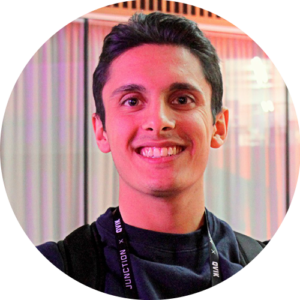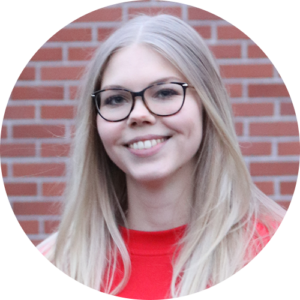- 6.05.2020
Many companies are riding out the COVID-19 crisis by adopting a remote first policy. Employees around the world are rolling out of bed straight into Zoom meetings, as we speak. However, there is still some uncertainty around remote work. For instance how productive can you be when working from your own home? How can you onboard new members from a distance? Would it even be possible to create a sense of belonging within a team? So to answer all these questions and more, we reached out to 3 Lifers who are working remotely for startups based in the US. Come, find out what they had to say.
Meet the Lifers

Antonio is part of the iOS team for a fantastic startup in the Bay Area called Elevate Labs. He was on-boarded remotely and is now working from his apartment in San Francisco.

Next up is Joakim, working as a Customer Success Manager (CSM) for Matchmade in Los Angeles. His workplace has also adopted a remote first approach, but it’s still possible for people to come into work if needed. Joakim’s mostly working from his home in LA, and sometimes visits the office because it’s within walking distance. However, for this post he’s drawing on his previous work experience at a fast growing transportation startup in Europe.

Then we have Emmi who joined Safetywing as a Frontend Developer. She started her onboarding process and to work remotely, before flying into the office in Palo Alto for 2 weeks. Now she’s back in Helsinki working remotely again, with the rest of the team based all over the world.
What was your remote on-boarding experience like?

Antonio arrived in San Francisco a week before the start date. However, unfortunately due to the COVID-19 situation his company adopted a ‘work from home’ policy before he could go into work. This meant his onboarding happened 100% online. The company very quickly translated all the training material into digital. Then a colleague made a special delivery of all the equipment he needed for work. Just like that, starting from the following Monday, Antonio hopped onboard via Zoom. The first day involved a lot of casual lunch meetings. Throughout the week he continued to meet different teams. As a result after a few days Antonio got to know over 30 people.
Antonio also has a manager assigned to him on the product he’s working on, who’s working as his guide. At the beginning they had daily meetings where he was briefed on many things in detail. Then he was assigned small tasks which his manager checked up on a daily basis. Following which these meetings shifted from daily to weekly, and then bi-weekly. However, his manager is always available on Slack to answer any questions and to follow up in general.
Antonio is the first person to be onboard and start working remotely at Elevate Labs. He’s very impressed on how they went online in a week. They’ve done a really good job. Moreover, it will help to tackle similar processes in the future and to start operating as fully remote if and when needed.

Joakim was recruited forming the 1st team in Finland, when his startup decided to expand out of Estonia. He then went on to finding and setting up the local office in Helsinki together with the team. The onboarding process was not strictly defined and involved discussing expectations and setting goals with the expansion manager. During this whole period he interacted with the management through video calls and chats. However, he really appreciates the opportunity he got to meet everyone face to face in Estonia at the company summit, a few months down the line. If he could do something differently, it would be to have an automated and loop based hiring process in place. This would essentially give a step by step timeframe of what would happen and what to expect.
Joakim’s advice is that if you want to join a fast growing company and are addicted to growth, be prepared that the on boarding process might not be perfect. Of course, it’s possible to have the best of both worlds, but often it’s hard to do both. Try to get as much face time as possible and listen to your intuition. Remember, everything starts with the connection between the new hire and the leadership of the company. Of course, it will change and evolve along the way.

Emmi works for a company where remote work is pretty much the norm. The entire company meets face-to-face only a few times a year. When she first joined the company she dived straight to working remotely in a stand alone project. It was after then, that she began her onboarding process remotely which was pretty minimal. For her this was far more productive, when she could explore different functions and ask questions when she needed to. Her company has a checklist of what one needs to know and do. You go through the list with the CEO to make sure you know everything that’s needed. Also during the first week you are assigned a person to answer any questions you have. During this time she got briefed in short sprints so there was no overload of information.
After a couple of months Emmi visited the San Francisco office where she met the rest of the team for the next two weeks. She feels it was really beneficial to meet her teammates face to face. Of course there is a similar connection when you are video conferencing with someone. However, in person they look and feel a little different. It’s almost as if you get to see the people behind the cameras. Everyone in the team agreed it gave us a little boost and lifted our moods a bit more. In retrospect, Emmi thinks that it may have taken her a little longer, compared to an office-setup, to get to know parts of the company that’s not directly related to her work.
How does your average day or week look when working remotely?

According to Antonio there are great processes in place at Elevate Labs which makes him part of the company and the process itself. Everyone in the engineering team catches up every Monday to recap the past week and set goals for the next. This makes it really easy for him to understand the different parts of a project, get to know what everyone is doing and stay updated. Moreover, when someone completes a task he/she is able to ask others to review it and discuss any changes before the outcome is finalized. This is something Antonio really values.

Joakim believes his company focused a lot of time to hire the right people with an entrepreneurial mindset from the start. As a result even if the processes were not 100% ready, work still went smoothly. The new team expected to face some challenges. However, they were motivated, aligned with the company goals and able to move forward. In the case of founding teams that pave the way, they will expect to be rewarded for their work down the line. A big upside is the freedom you get to structure how you work.
A tip Joakim has specially for teams working from different time zones is to keep the relevant people in the loop. Even if someone is sleeping or not online, it really helps to add them to the conversation. For instance if you are using Slack, write the message in the right channel and not as a private message. People don’t always want to be tagged but have the opportunity to follow the discussion passively. Don’t forget to have a random channel dedicated for positive and funny content.

Getting back to her normal routine after returning to Finland was quite easy for Emmi. She says it’s all about deciding what your daily rhythm should be like and holding yourself to these standards. She’s the first person to wake up in her company because of the time difference. Therefore, she used the morning hours for focused work. Then she goes to the gym during midday and jumps back into focused work. In the evening she joins meetings, discusses common issues and works on problems together with her team. However the company has realized that one of the biggest benefits of working remotely is to have super focused time to do your own tasks. As a result they have two meeting-free days.
Stay tuned for Part 2 of these stories to discover more about the everyday life of working remotely! To find a great startup job you can do from the comforts of your home check out our open positions now.

